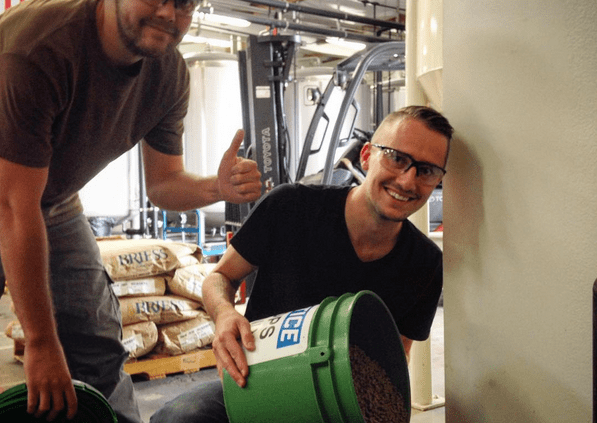Beer Paper LA December 2015 Article
In case you missed it, here is the text to my article in Beer Paper LA from December 2015. Catch my second piece in the June 16 issue now! You may have noticed a lack of blog posts since March 2015. Oops! Hope to be more active soon. Cheers!
-Kevin
Back in May, I was lucky enough to win best of show in The Bruery’s Homebrew Competition. The beer that won was inspired by a session IPA, but fermented 100% with the “wild” yeast brettanomyces. I keep a blend of brett strains which is maintained like a sourdough starter and feed it every few weeks to keep it alive. There are at least ten unique strains in my culture, so when corresponding with Andrew Bell from The Bruery leading up to brew day, we decided the more strains they could add, the better. We ended up using four, with Trois being the primary strain.
Hops were another hurdle to overcome. My recipe called for El Dorado, Mosaic, and Chinook. The Bruery decided to make 180 barrels of my beer so we needed hundreds of pounds of these varieties, none of which was part of their hop contract. Thankfully, at the last minute the hops were procured.
One might think this beer was an odd choice for a brewery which explicitly does not make IPAs. Though I’m now recalling that their last home brewer collaboration was Batch 1000, a hoppy dark Cascadian rye ale. My collaboration with them will be called Batch 1731, the randomness of which suits my anarchistic tendencies.
Highland Park Brewery, The Good Beer Co, Craftsman, Phantom Carriage, Monkish, Casa Agria Specialty Ales, Beachwood Blendery, Dry River, and the soon to be Homage Brewing are all killing it with their wild beers. The popularity of sour, funky beer is not an accident, because brett is amazing. It can consume almost any sugar source including those in oak, dead yeast, and other long chain sugars left untouched by normal sac- charomyces strains.
After a beer is completely dry, brett can still break down and survive on carbohydrates, proteins, and even alcohol; continuing to create flavors and aromas months after fer- mentation is complete. Brett strains possess glycosides which allow them to break down the flavor and aroma compounds of ingredients such as hops and fruits to create flavors often described as tropical, which are not found in any other beer styles. It can metabolize small amounts of acetic acid (vinegar) and other organic acids that may be present to produce unique esters such as ethyl acetate, which can add pear-like flavors (but in high doses can become nail polish, so be careful of oxygen exposure). It can scavenge ox- ygen to help keep beers tasting fresh and preserve hop flavor and aroma. Unlike other yeasts, it can survive in very high alcohol beers and at a very low pH. As Chad Yakobson from Crooked Stave found, it can even turn the disgusting bile-like flavor from butyric acid into ethyl butyrate which gives a distinctive pineapple aroma.
Brettanomyces can be counterintuitive in the most novel ways. When used in secondary or for bottle conditioning, brett will completely dry out a beer and create very funky and farmhouse like flavors. But when used as the primary fermentor, it can create very clean and delicate beers that don’t necessarily become super dry. Despite there being only a few strains commercially available, the genetic structure of brett is twice as complex as normal ale yeast strains, giving it the potential for larger intraspecies variation. Some new micro-labs such as Bootleg Biology and The Yeast Bay have started releasing some really exciting new strains this year.
Very little research has been published on the characteristics of brett, so this information is just the tip of the proverbial iceberg. It is a fun time to be in the beer industry! Nobody should be wary of attempting to make sour and wild beers anymore. There is so much information available now on sites such as Milk the Funk and The Mad Fermentationist, and on the Sour Hour podcast. Chad Yakobson’s interview on The Brewing Network is full of very good knowledge. When used correctly, brett can make the most delicious of beers. So give it a try!
We brewed Batch 1731at The Bruery on Tuesday October 27, which just happened to be the annual release day for Black Tuesday. This was the first major event they’ve held in their barrel cellar, and it was magical. I have an unhealthy obsession with oak, and walking into that building with its hundreds of barrels stacked high to the ceiling was inspirational.
Look for Batch 1731 to be released by The Bruery in January 2016!

Kevin E, Osborne is a homebrewer, soon to turn pro brewer with his own brewery project, Cellador Ales in North Hills, where he will be making 100% oak-fermented mixed-fermentation American wild ales. Watch for releases on Instagram @Cellador_Ales.


